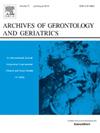了解丧偶后的孤独感:社会隔离、社会支持、自我效能和健康相关因素的作用
IF 3.8
3区 医学
Q2 GERIATRICS & GERONTOLOGY
引用次数: 0
摘要
背景丧偶会对社会隔离和孤独产生负面影响。目的 研究社会隔离、社会支持、社会人口、自我效能、健康和生活质量等因素对丧偶前后孤独感变化的调节作用。方法 我们分析了澳大利亚家庭、收入和劳动力动态调查(HILDA)的 19 波数据,其中包括 749 名丧偶者和 8418 名已婚者(对比)。在控制年龄和时间趋势的前提下,对数据进行了精确匹配加权。局部多项式平滑图显示了从配偶死亡前三年到配偶死亡后三年的社会健康轨迹。所有分析均按性别进行了分层。结果较低的社会隔离度和较高的社会支持度并不能防止丧偶后孤独感的增加。与地区/偏远地区的男性相比,大城市的男性尽管在基线时的社会隔离度较低,但在丧亲期间社会隔离度降低的可能性较小。丧亲之痛与孤独感之间的关系在所有分组中都是一致的。对于男性而言,年龄较大和出生在非英语国家削弱了这种关系,而贫困和生活在地区/偏远地区则加强了这种关系。对于女性来说,年龄越大,这种关系越弱,而出生在非英语国家、贫困、就业或志愿服务以及患有长期精神疾病等因素则会加强这种关系。本文章由计算机程序翻译,如有差异,请以英文原文为准。
Understanding loneliness after widowhood: The role of social isolation, social support, self-efficacy, and health-related factors
Background
Widowhood negatively affects trajectories of social isolation and loneliness. Given the inevitability of spousal bereavement for many, further investigation into potential modifiers of bereavement-related loneliness is warranted.
Aim
To examine the moderating effects of social isolation, social support, sociodemographic, self-efficacy, health, and quality of life factors on changes in loneliness before and after widowhood.
Methods
We analysed 19 waves of data from the Household, Income and Labour Dynamics in Australia (HILDA) Survey, comprising 749 widowed and 8,418 married individuals (comparison). Coarsened exact matching weights were applied, controlling for age and time trends. Local polynomial smoothed plots illustrated social health trajectories from three years before to three years after spousal death. All analyses were gender-stratified.
Results
Low social isolation and higher social support did not prevent increased loneliness following widowhood. Men in major cities were less likely to experience reductions in social isolation during bereavement, despite being less socially-isolated at baseline than men in regional/remote areas. The bereavement-loneliness relationship was consistent across all subgroups. For men, this relationship was weakened by older age and being born in a non-English-speaking country, but strengthened by poverty and living in a regional/remote areas. For women, it was weakened by older age, and strengthened by factors such as being born in a non-English-speaking country, poverty, employment or volunteering, and having a long-term mental health condition.
Conclusion
Loneliness is a common and potentially unavoidable experience during widowhood, highlighting the importance of screening by healthcare workers to improve wellbeing and prevent future mental health issues.
求助全文
通过发布文献求助,成功后即可免费获取论文全文。
去求助
来源期刊
CiteScore
7.30
自引率
5.00%
发文量
198
审稿时长
16 days
期刊介绍:
Archives of Gerontology and Geriatrics provides a medium for the publication of papers from the fields of experimental gerontology and clinical and social geriatrics. The principal aim of the journal is to facilitate the exchange of information between specialists in these three fields of gerontological research. Experimental papers dealing with the basic mechanisms of aging at molecular, cellular, tissue or organ levels will be published.
Clinical papers will be accepted if they provide sufficiently new information or are of fundamental importance for the knowledge of human aging. Purely descriptive clinical papers will be accepted only if the results permit further interpretation. Papers dealing with anti-aging pharmacological preparations in humans are welcome. Papers on the social aspects of geriatrics will be accepted if they are of general interest regarding the epidemiology of aging and the efficiency and working methods of the social organizations for the health care of the elderly.

 求助内容:
求助内容: 应助结果提醒方式:
应助结果提醒方式:


